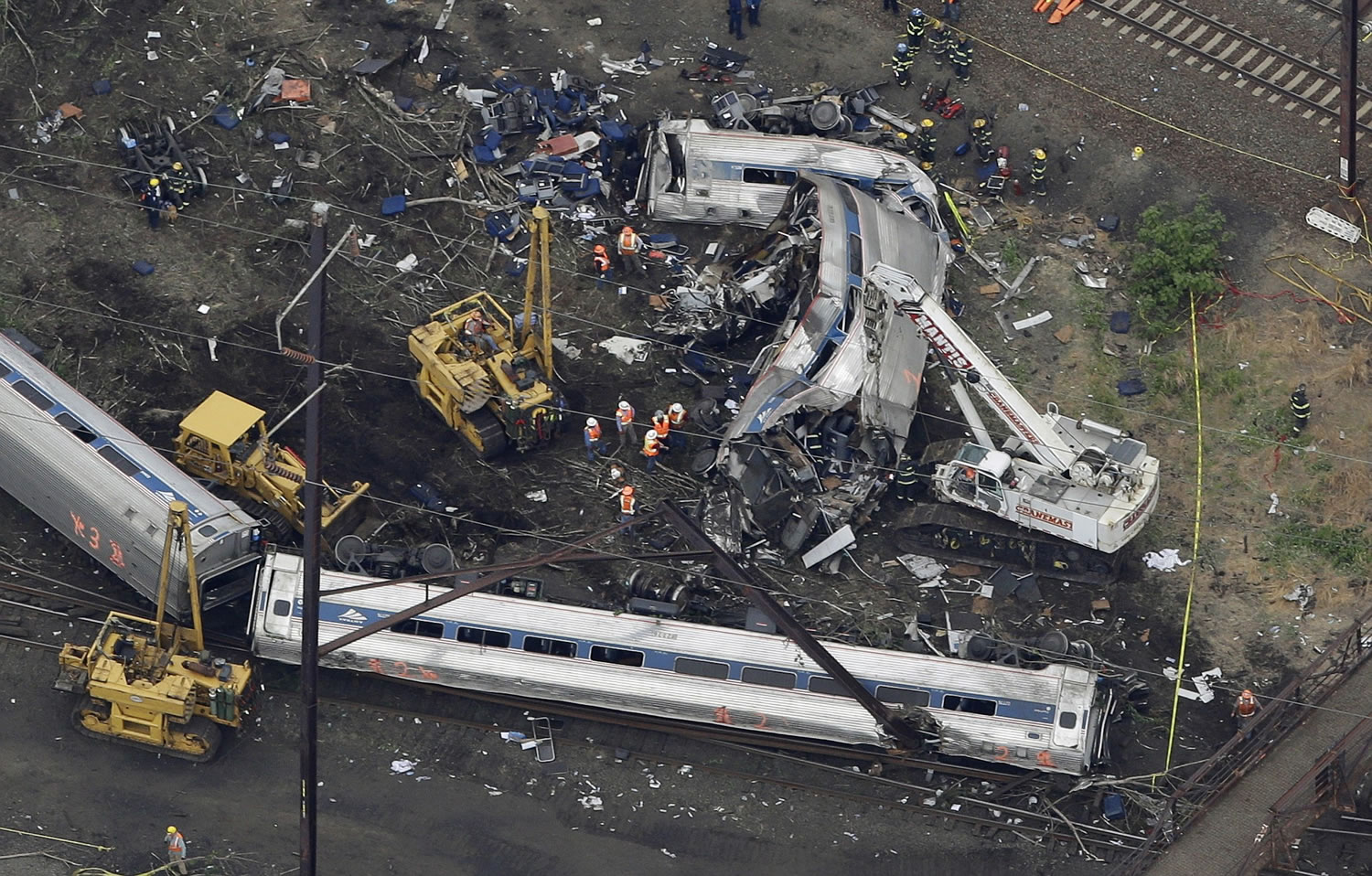WASHINGTON — Federal investigators looking into the Amtrak derailment that killed eight people and injured scores of others in Philadelphia last month are trying to determine whether the engineer was using his cellphone when his train approached a curve at more than twice the speed limit.
Christopher A. Hart, chairman of the National Transportation Safety Board, told a congressional committee Tuesday that investigators want to know whether Brandon Bostian, 32, was texting or on the phone as the train accelerated to 106 mph as his train careened into the bend.
“We know that there is text and voice activity on that day,” Hart said. “We’re trying to narrow down (the time frame). We were surprised by the complexity ourselves, and we’re experts on this.”
Bostian, through his lawyer, said after the May 12 crash that his cellphone was inside his backpack in compliance with federal regulations.
Hart said Tuesday that a seemingly simple matter — getting a time stamp on phone calls and test messages — was complicated by the fact that Bostian’s cellphone carrier was three time zones away in California.
“And we found (time) discrepancies within the carrier’s own system,” Hart said.
He also said that the clock of the train’s on-board data recorder might show an incrementally different time than that shown on Bostian’s phone.
Though it will be months before the NTSB issues a formal report on the cause of the crash, the focus of the investigation appears to have narrowed to Bostian’s actions. Hart told the committee that there was no indication of problems with the locomotive, track, braking or signal system.
“We need technology that can step in when humans fail,” Hart said.
Sarah Feinberg, acting head of the Federal Railroad Administration, told the committee that her agency would roll out new plans to control for human error within weeks.
“Speed, simply put, is what we refer to as a human factor,” said Feinberg, who was nominated by the White House to become permanent head of the FRA.
Bostian was at the controls of the northbound train that began its trip at Washington’s Union Station and had just stopped at 30th Street Station in Philadelphia. After leaving that station it gained speed to 80 mph as it moved east across the city. Rather than slow down as it approached a sharp curve to the left with a 50 mph speed limit, the train sped to 106 mph before Bostian hit the emergency brake.
Entering the turn at 102 miles per hour, the train derailed. Bostian survived with minor injuries, but the passenger car just behind the engine crumpled like a tin can. In addition to the dead, about 200 people were injured.
The question of whether Bostian was using his cellphone at the time of the crash might have been answered if Amtrak trains were equipped with inward-facing video cameras. Amtrak President and chief executive Joseph Boardman said last week that cameras would be installed.
Bostian told investigators that he had no memory of what happened immediately before the crash.
“Inward-facing cameras would help fill in those gaps,” Hart told the committee.



